CEO Matt Hicks On Red Hat Layoffs, IBM’s Open Source Vision
“[Layoffs are] a healthy thing that you have to do every once in awhile to make sure you’re putting investment in the right areas that are going to help you keep being successful with customers,” Red Hat CEO Matt Hicks tells CRN.
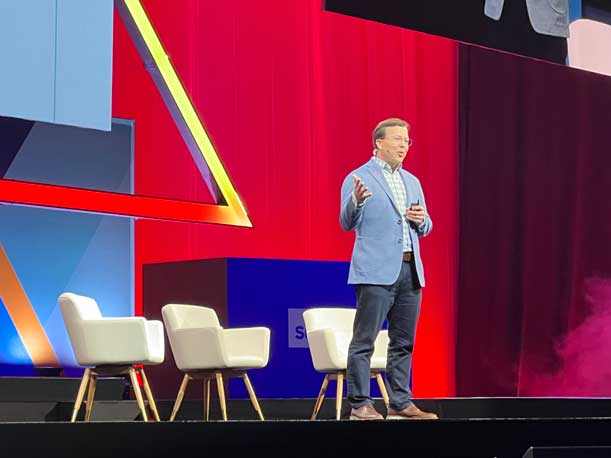
Red Hat CEO Matt Hicks sat down with CRN to discuss the company’s recent layoff round, whether any more pieces of Red Hat will be absorbed by IBM, and avoiding cloud lock-ins when it comes to Red Hat’s open hybrid cloud strategy.
Hicks became president and CEO of Red Hat in July and is approaching his eighteenth year with the Raleigh, N.C.-based open-source software superstar.
“When I started [in the CEO role], the thing I really wanted to correct is: know why we’re here, known what we do, be excited about what we do,” Hicks told CRN. “We can’t chase every single battle challenge in technology that’s out there. We’ve got to be laser-focused on that.”
Before jumping into what Hicks had to say about Red Hat laying off about 800 employees and IBM becoming “more comfortable” with open source, it is key to note that the 2023 Red Hat Summit is wrapping up today in Boston with an estimated 5,000 people in attendance.
[Related: Red Hat CEO: Partners Have ‘A Ton Of Value-Add’ Around AI]
Red Hat Summit 2023
Thousands of partners, developers and customers flocked to the Boston Convention Center this week for Red Hat Summit 2023 where the company unveiled a slew of new innovations.
Some of Red Hat’s biggest product announcements at the conference include Ansible Lightspeed with IBM Watson Code Assistant, a new generative artificial intelligence (AI) service for Red Hat’s Ansible automation offering. Red Hat also unveiled a new Developer Hub portal that will provide curated tools, languages and resources to boost applications and reduce friction across environments such as Kubernetes and Red Hat OpenShift.
“Red Hat is really focused on RHEL, Ansible and OpenShift, and consolidating what they’re going to market with, which is helping us focus on where we invest resources,” said Andrew Tenaglia, vice president of app modernization at Red Hat partner Converge Technology Solutions. “We’re seeing more investment from them and have more recourses to help us have these co-created solutions with them around the automation stack.”
In an interview with CRN, CEO Hicks talks about Red Hat’s recent layoffs, whether IBM will absorb any other Red Hat businesses as it did with storage last year, where Red Hat plays in AI, and the company’s market differentiation when it comes to open cloud computing technologies.

There’s been massive layoffs throughout the IT industry this year. Red Hat recently laid off around 800 employees. Do you expect any more layoffs at Red Hat?
For us, we have a really, really good opportunity right now. Being really thoughtful about making sure you can invest in that opportunity is critical. So for us, it was a rebalancing move.
We’re in this moment of AI. We have this impact on developer and operations efficiency and security. We need to be able to put enough in engineering and in sales to be able to take advantage of that to help customers move forward and adopt that.
So I can’t speak to other companies of whether that was their stance, but that was our intent with it.
But it was really more of an acceleration focus for us than anything else. I think it’s a healthy thing that you have to do every once in awhile to make sure you’re putting investment in the right areas that are going to help you keep being successful with customers.
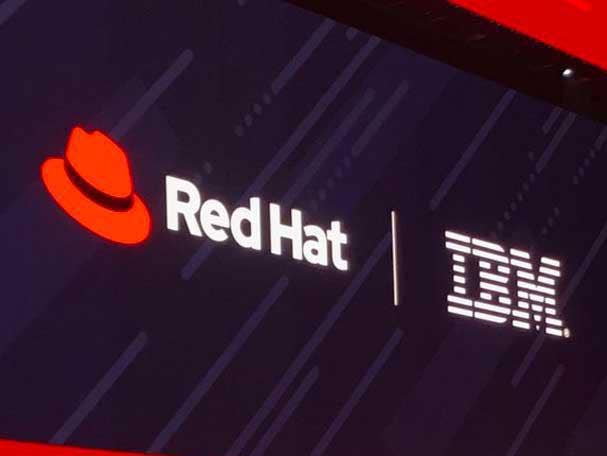
IBM absorbed Red Hat’s storage business last year. Are there any more pieces of Red Hat going over to IBM? Or is Red Hat settled in now since IBM acquired you four years ago?
We’ve always refined our portfolio in picking projects we participate in or not. The last component we moved to IBM was the storage area. I’ve described that as: it was the right technology and it was a thriving community, but our space as a platform business—we sort of only knew how to attach it to the platforms.
That actually held that technology back a bit. IBM was just a more natural fit. They know how to sell and they’re committed to storage. For storage’s sake, they could take that technology further than we can. I always look at our portfolio this way.
I would say strategy-wise, we have a very stable base with IBM where they look to Red Hat for that open hybrid cloud base. Even when you look at the AI areas, we underpin the Watson announcements with OpenShift AI.
So as we’re four years into this, we found some really stable swim lanes of where we do well on it. But I also think you’ll see IBM adjust and we’ll adjust.
Like IBM and their Watson X announcements partnering with Hugging Face, which is sort of an open-source AI model, which I was really excited about. It’s not IBM is proprietary and Red Hat has the open source. You will see some blurring of that as IBM is more comfortable with open source and really adopts it. I think that’s a great thing for open source, not a thing that’s impeding on Red Hat’s ability.
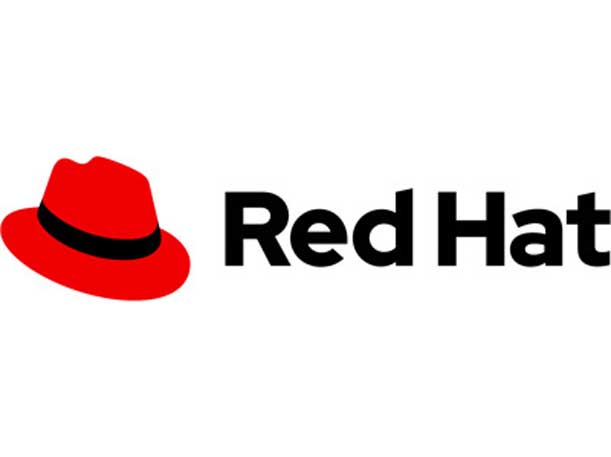
When you stepped into the CEO role about one year ago, what’s one thing you saw that Red Hat could do better at, and one thing Red Hat was doing better at than you thought?
The better than I thought aspect is: It’s pretty exciting being able to stand up on stage at Red Hat Summit and have a litany of announcements and innovations that span all of these areas. Because I’m not building those myself. So that innovation pipeline at Red Hat is really, really strong. It’s neat to be able to, sort of, be the recipient of a lot of that.
The need to do better at: For us, it was focusing on the most important areas, probably from day one of when I took this role. Because there is so much chaotic elements, whether it’s economic or social — there were a lot of things pulling people in different directions. Just for me, stylize-wise, when you have all of those things that can distract you, really being focused on where you add value and what we do as a company can help get you through it.
When I started [in the CEO role], the thing I really wanted to correct is: know why we’re here, know what we do, be excited about what we do, look at the opportunities. We can’t chase every single battle challenge in technology that’s out there. We’ve got to be laser-focused on that.
That started with my North Star email to the company, [which] was, ‘Let’s know that direction.’ But those are fun. Like, that’s not necessarily a new thing for me. That strategy of keeping teams focused to energize them has always been important for me. In this environment, it’s even more important than ever.
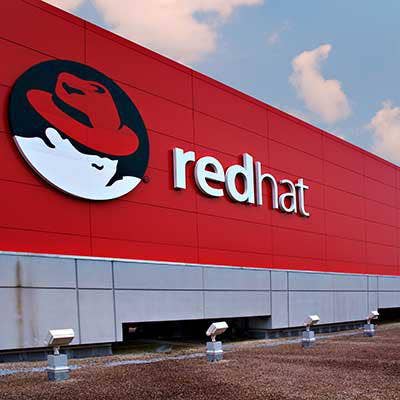
What’s your big market differentiation over your competitors in 2023 when it comes to open cloud technologies?
I will put it in two buckets. The first is that we don’t mix an open-source and proprietary model on it.
So there’s no secret sauce that we try to hold back on it, which I’m happy about. If we see how fast open source is innovating, it’s a challenge to have a foot in both camps for that. So the first differentiator for us is: We join thriving communities, we contribute back to them, and then we try to channel that innovation into a way that enterprise customers can use it.
That’s still pretty unique. That’s one we really believe in. We’ve been able to find that balance where it’s a healthy business for us. But then it also really lets open-source communities thrive.
The second piece that’s been helpful for us is, we’re infrastructure neutral.
We make data centers work. We’re happy if you end up in the public cloud. We partner with Amazon, Google, Microsoft. We’re also equally excited about the edge. We’ve always been hardware neutral to some standpoint. If you look at the early days of RHEL, we helped enable you to move from Dell servers to HP servers, and back — whatever your hardware choice was.
[Customer cloud lock-in] has really amplified quite a bit where we don’t have our own cloud. We’re not trying to lock you into one position there.
We want to have platforms that run in all those locations. So then you get our open-source innovation and it’s reach-of-model. Our hope is, if you learn our approach to it, it is broadly applicable for you to work in data centers or work in concert with public clouds. It’ll work at the edge. And then, hopefully, it lets you expand where you can innovate a bit more.
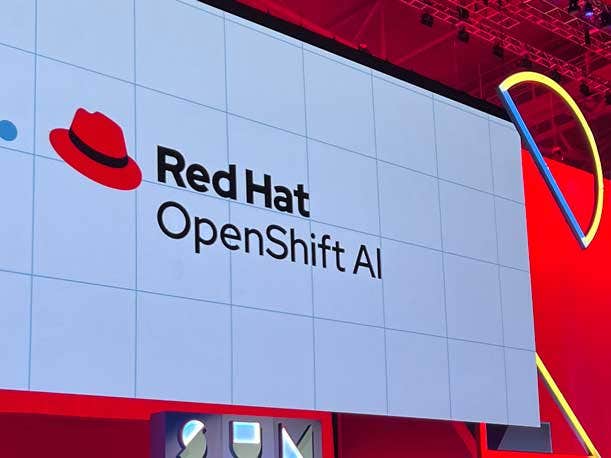
What role does Red Hat play in the red-hot AI market right now?
It’s really exciting to be able to train a model — and there are these big foundation models that are trained by arguably just a few companies in the world. But then the ability to refine those with your data — that’s the exciting part to us.
I don’t think every enterprise on the planet will train their own core models just from data to start, but they’ll take a model — whether it’s the foundation code model from IBM or GPT-3 — and they can incrementally train it with their unique data. That’s another really powerful aspect of our specialization to it.
In Red Hat’s world, we live in the, ‘How do we enable training?’
We have the hardware attach from RHEL to Nvidia. We have the distributed computing attached with OpenShift, which you need to do training. This isn’t like a one GPU thing. We work pretty closely with IBM — that is a supercomputer environment to train core foundation models on.
Although enterprises do that on a lower scale, I’m like, ‘Well, if I can make OpenShift work and OpenShift AI for IBM, we know it’ll work for those refinement layers.’ So we work on the training side to, given your data, get you a new model. And then it’s, ‘How do we actually deploy that so your app developers can use it?’
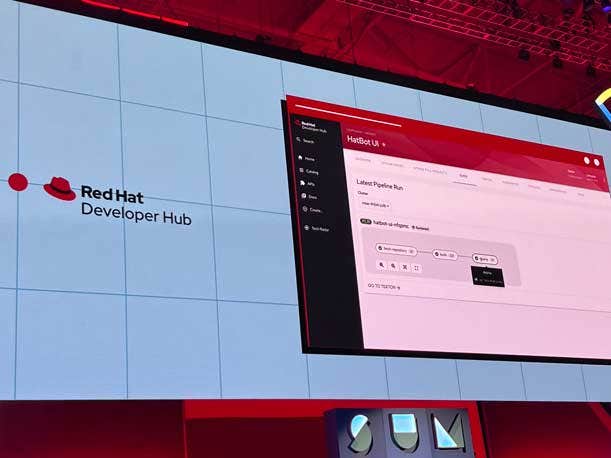
Double down on the key role Red Hat plays in AI training and enablement.
We don’t care if it’s a machine learning model, a convolutional neural network, a foundation model, et cetera. We can help you train and we can help you refine. Then we can put that model at the edge, which is where we’ve had a lot of focus, so you can ask it questions as close to your customer as you want.
I’m hoping that will shift us from having these big data science experiments work more. Some of them are great, but they can never get to production on it. A lot of development projects can never get to production.
Our goal is ‘How do we shorten that cycle with AI?’ That’s sort of where we play, is in that plumbing space. We help move models to production. We help train them or find models and get them to the edge, but we don’t really care about what type of model it is.
So we get to be excited watching OpenAI work, Hugging Face’s work, IBM, et cetera. It’s great innovation that, obviously, we have to have the stacks to support them, but that’s our world. We know that world.
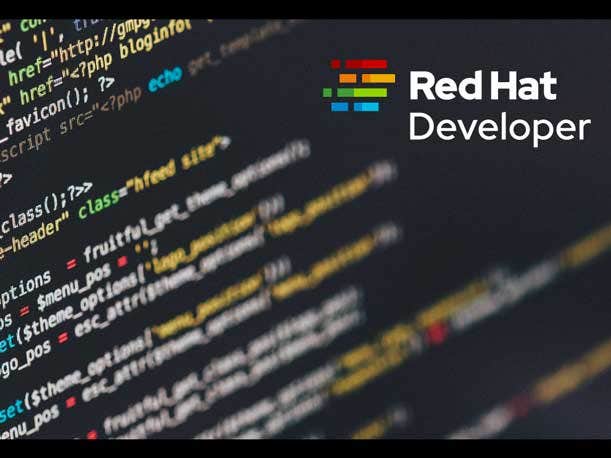
What’s your message to Red Hat channel partners?
Red Hat being a platform company, is what we do. It means you’re not the total solution. We are almost always partner focused. Whether it’s partners adding workloads, partners managing it, partners deployment of it — partners are that last-mile link for us.
I like to think we’re in the middle of open-source innovation, which [are] really exciting platforms for customers to be working with. Partners will surround everything we do, every single partner type.
That’s been true from the days of Linux. It could never be more true than in the AI moment right now of, ‘We play one role in that.’ Red Hat does a good job of staying in our swim lane really well and we let partners add value around it. It’s going to be an exciting partner time because they’ll be in the last mile. They’ll be with customers. They’ll know the customer challenges and we can hopefully help them get there faster.
That’s why if I was a partner, it’s a good time to be bullish on that because the customer demand will draw them to our platforms. And partners can add a lot of value around what we do for our customers.